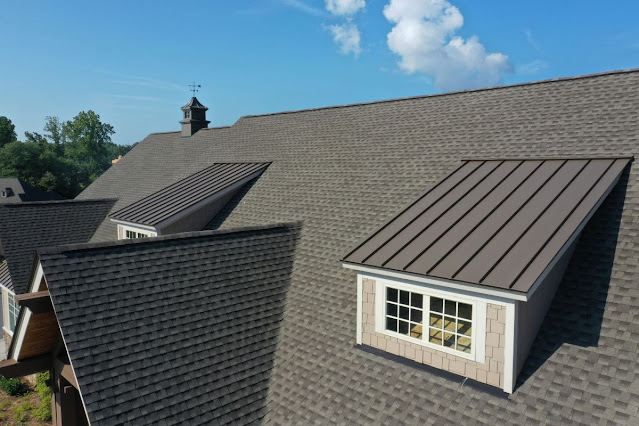Understanding Roof Pitch: The Key to a Secure and Stylish Home
When it comes to your home's architecture, few elements are as crucial as the roof. Not only does it protect you from the elements, but it also contributes significantly to your home's aesthetic appeal and structural integrity. One often-overlooked aspect of roofing is the roof pitch – the angle at which your roof slopes. Understanding roof pitch is paramount for homeowners, as it impacts everything from drainage and insulation to the overall style of your home.
What is Roof Pitch?
In simple terms, roof pitch refers to the steepness or slope of a roof. It is typically expressed as a ratio, representing the vertical rise in inches for every horizontal foot. For example, a roof with a pitch of 6:12 rises 6 inches vertically for every 12 inches horizontally. Alternatively, roof pitch can be expressed in degrees, indicating the angle of the slope. The higher the first number in the ratio or the steeper the angle in degrees, the more pronounced the slope of the roof.
Importance of Roof Pitch
Structural Integrity
The roof pitch plays a crucial role in determining how effectively your roof sheds water, snow, and debris. A steeper pitch encourages quick runoff, reducing the risk of water pooling and potential leaks. Additionally, a steeper slope enhances the roof's load-bearing capacity, especially in areas prone to heavy snowfall, as it minimizes the weight accumulation on the structure.
Drainage Efficiency
Proper drainage is essential for preventing water damage and prolonging the lifespan of your roof. The pitch dictates the speed at which water flows off the roof's surface. Low-pitched roofs may struggle with drainage, leading to water pooling and eventual leaks. Conversely, roofs with a steeper pitch ensure efficient drainage, reducing the likelihood of moisture-related issues.
Energy Efficiency
Roof pitch significantly influences the effectiveness of insulation and ventilation systems. Steeper roofs provide more space for adequate attic ventilation and insulation, improving energy efficiency by minimizing heat transfer between the interior and exterior of the home. This can lead to lower heating and cooling costs, making it an attractive feature for environmentally-conscious homeowners.
Aesthetic Appeal
Beyond its functional aspects, roof pitch plays a pivotal role in defining the architectural style and visual appeal of your home. Different roof pitches are associated with various architectural styles, from the dramatic steep slopes of Gothic architecture to the gentle inclines of Mediterranean villas. Choosing the right roof pitch can enhance the overall look of your home and complement its design aesthetic.
Roof Pitch Affects
When it comes to your home's architecture, few elements are as crucial as the roof. Not only does it protect you from the elements, but it also contributes significantly to your home's aesthetic appeal and structural integrity. One often-overlooked aspect of roofing is the roof pitch – the angle at which your roof slopes. Understanding roof pitch is paramount for homeowners, as it impacts everything from drainage and insulation to the overall style of your home.
Also read : How Roof Pitch Affects Your Home
Factors Influencing Roof Pitch
Climate
Local climate conditions heavily influence the ideal roof pitch for your home. In regions with heavy rainfall or snowfall, a steeper pitch is recommended to facilitate proper drainage and prevent water or snow accumulation. Conversely, in arid climates, a lower pitch may be sufficient, as the risk of water-related issues is significantly reduced.
Architectural Style
The architectural style of your home often dictates the appropriate roof pitch. Traditional styles like Colonial or Victorian architecture typically feature steeper pitches, while modern designs may incorporate lower slopes or even flat roofs. Aligning the roof pitch with the overall architectural theme ensures harmony and coherence in your home's design.
Building Codes and Regulations
Local building codes and regulations may impose minimum requirements for roof pitch based on factors such as climate, structural integrity, and safety standards. It's essential to consult these guidelines and work with a qualified professional to ensure compliance with all relevant regulations when planning roofing projects.
Personal Preference
Ultimately, your personal preference and aesthetic vision for your home play a significant role in determining the ideal roof pitch. Whether you prefer the classic charm of a steeply pitched roof or the sleek, modern look of a low slope, understanding your preferences can guide your decision-making process and help you achieve the desired outcome.
Conclusion
In conclusion, roof pitch is a fundamental aspect of residential roofing that impacts both the functionality and aesthetics of your home. Understanding the importance of roof pitch, along with the factors influencing it, is essential for making informed decisions about your roofing needs. Whether you're building a new home or renovating an existing one, consider the role of roof pitch in enhancing your home's structural integrity, energy efficiency, and visual appeal. By prioritizing the right roof pitch for your specific requirements, you can ensure a secure, stylish, and sustainable living environment for years to come.
.jpg)



Comments
Post a Comment